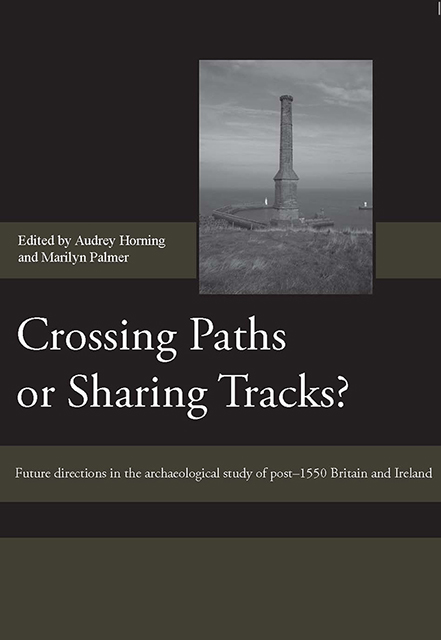 Crossing Paths or Sharing Tracks?
Crossing Paths or Sharing Tracks? Conclusion – The Way Forward?
Published online by Cambridge University Press: 07 March 2023
Summary
INTRODUCTION
The process of conceptualising and implementing the Crossing Paths or Sharing Tracks? conference, and the subsequent compilation and editing of this volume, has been an interesting, mostly enjoyable, but admittedly occasionally tense experience for us as editors. To some extent, our diff ering backgrounds exemplify the point of the whole endeavour: we do not always agree withone another's perspective, we come from diff erent educational, professional and cultural backgrounds, but we bothbelieve strongly and indeed passionately that the study of the material heritage of the past five hundred years, whatever we choose to call it, is important, is valid, and has a role to play in contemporary society.
We bothsee archaeology as fundamentally about people rather than just about things, but equally we would argue that it is in understanding the reflexive relationship between people and things that will bring a rapprochement between the ‘camps’ whose perspectives have been highlighted throughout this volume. We don't pretend to have solved any of the major dilemmas facing the academic, commercial, public and avocational constituencies represented in this volume, nor to have agreed upon more unified theoretical or legislative frameworks for advancing understandings of the material legacy of the last five centuries. We do wish to promote continued dialogue and mutual respect, if not full agreement, within and beyond what Matthew Johnson referred to in his Foreword as the ‘archaeological family’. With that goal in mind, the following discussion endeavours to contextualise some of the discussions raised at the conference and in this publication.
CHALLENGING CHRONOLOGY
When the Society for Post-Medieval Archaeology (SPMA) and the Association for Industrial Archaeology (AIA) were founded in the 1960s, the diff erences between them were perceived to be ones of chronology and approach. The Editor of the first volume of the journal Post- Medieval Archaeology in 1967 defined the chronological scope of the society as ‘the period of the unification of states within the British Isles, the establishment of Britain upon the pathof maritime colonial expansion and the initial stages of industrial growth’. At that time, then, post-medieval archaeology in Britain had a terminus post quem of c. 1750–80.
- Type
- Chapter
- Information
- Crossing Paths or Sharing Tracks?Future directions in the Archaeological Study of Post-1550 Britain and Ireland, pp. 397 - 408Publisher: Boydell & BrewerPrint publication year: 2009
- 1
- Cited by
